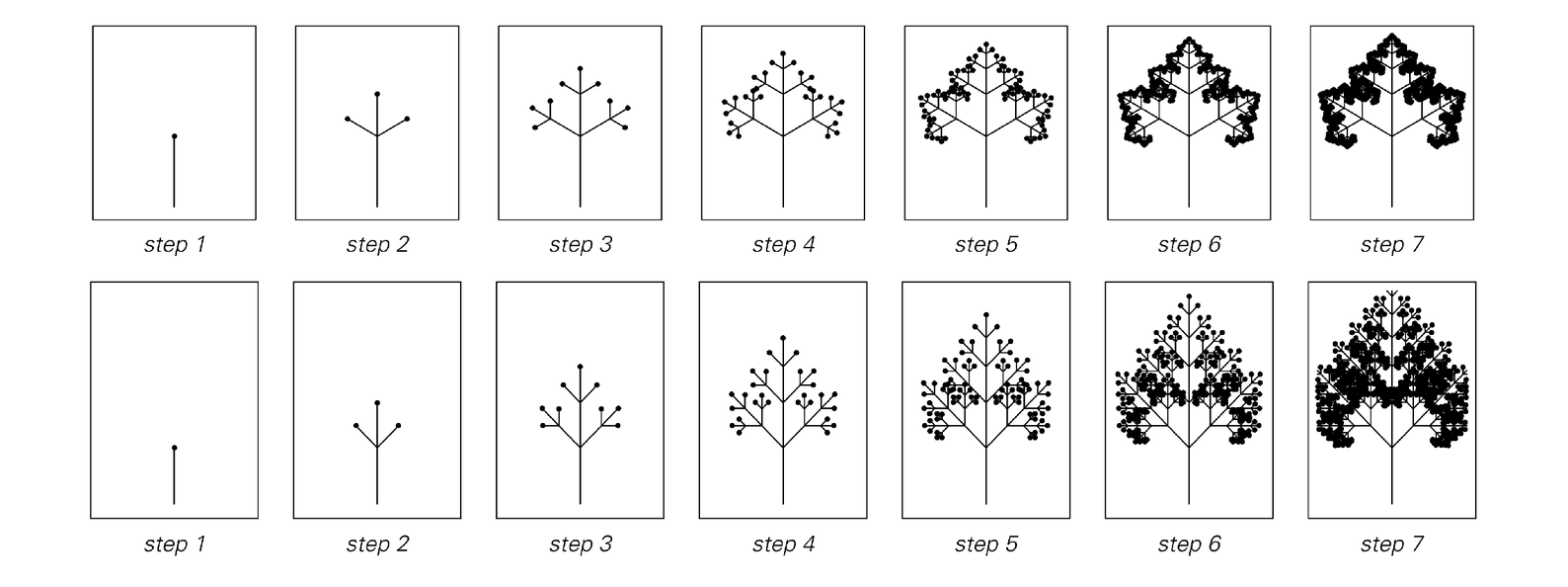Growth of Plants and Animals
Looking at all the elaborate forms of plants and animals one might at first assume that the underlying rules for their growth must be highly complex. But in this book we have discovered that even by following very simple rules it is possible to obtain forms of great complexity. And what I have come to believe is that in fact most aspects of the growth of plants and animals are in the end governed by remarkably simple rules.
As a first example of biological growth, consider the stem of a plant. It is usually only at the tip of a stem that growth can occur, and much of the time all that ever happens is that the stem just gets progressively longer. But the crucial phenomenon that ultimately leads to much of the structure we see in many kinds of plants is that at the tip of a stem it is possible for new stems to form and branch off. And in the simplest cases these new stems are in essence just smaller copies of the original stem, with the same basic rules for growth and branching.
With this setup the succession of branchings can then be represented by steps in the evolution of a neighbor-independent substitution system in which the tip of each stem is at each step replaced by a collection of smaller stems in some fixed configuration.
Two examples of such substitution systems are shown in the pictures below. In both cases the rules are set up so that every stem in effect just branches into exactly three new stems at each step. And this

Steps in the evolution of substitution systems that provide simple models for the growth of plants. At each step every growing stem is replaced by a collection of three new stems according to the rules shown. For individual stems this type of branching is known in botany as monopodial.



